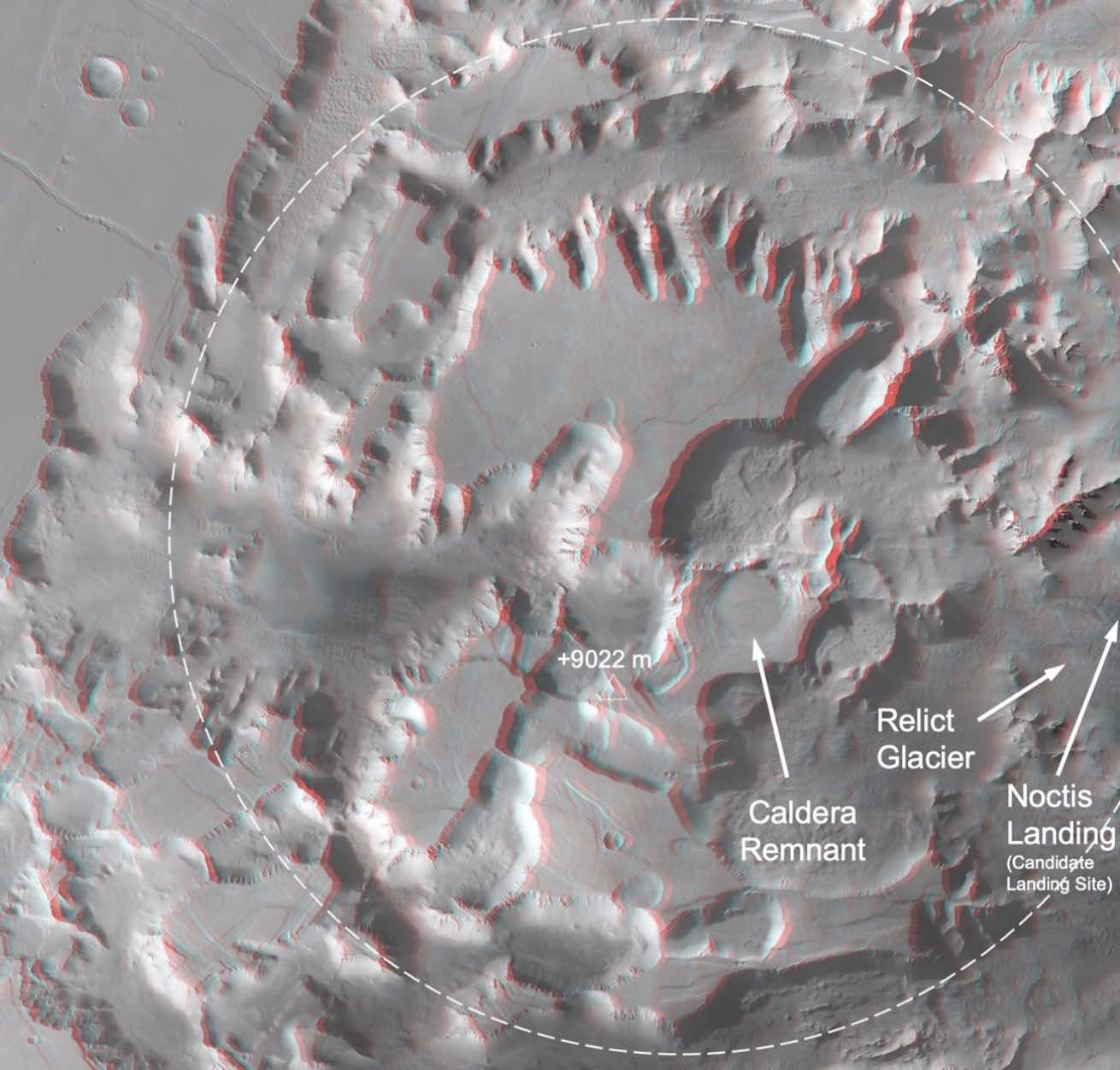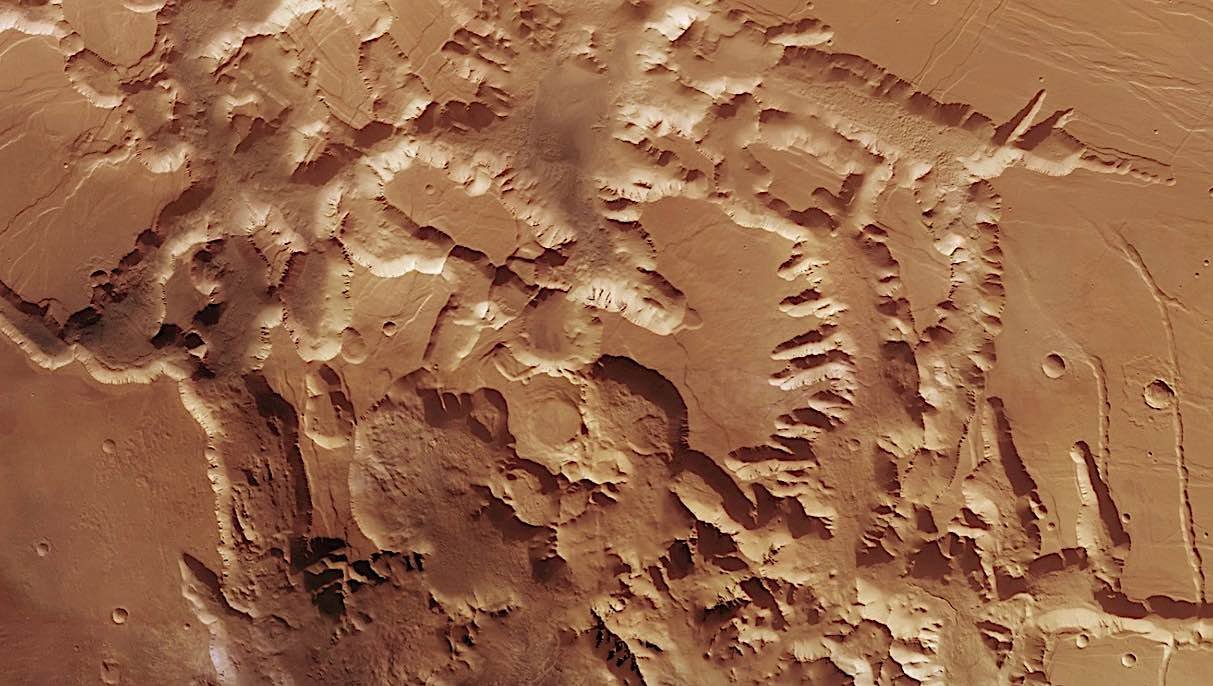Scientists have discovered a gigantic volcano on Mars near the planet’s equator that remained unnoticed for decades, according to newly published research.
The huge volcano was found in the Red Planet’s eastern Tharsis volcanic province, along with what researchers interpret to be a large sheet of buried glacial ice beneath the Martian surface. The discovery came as a surprise, partly because orbital spacecraft have photographed this region of Mars since the early 1970s.
Hidden in plain sight now for decades, the giant volcano, which has undergone extensive erosion over time, somehow remained unnoticed.
The feature has been given the temporary name “Noctis volcano” due to its proximity to the Noctis Labyrinthus, a region noted for its steep valleys that possess a maze-like appearance.
The 29,600-foot-tall volcano covers an area spanning approximately 280 miles and is believed to have remained active for an extended period. However, it is the giant volcano’s proximity to a region where glacier ice is believed to exist that makes the discovery so promising for researchers, who say it offers a location ripe for studies of the Red Planet’s geology and evolution over time.
The location could also be a promising area for future studies involving potential life that may have once existed—or could still exist—on Mars, with its promising combination of warmth from volcanic activity and water made present by the ancient glacier.


Dr. Pascal Lee, a planetary scientist with the SETI Institute and the Mars Institute, said he and his coauthors of a new study detailing the discoveries say they stumbled onto the huge volcano while observing other features.
“We were examining the geology of an area where we had found the remains of a glacier last year when we realized we were inside a huge and deeply eroded volcano,” Lee said in a statement.
Lee and his coauthors said there were several clues that the area was a massive volcano, which included a series of mesas that formed an arc, as well as what soon revealed itself through examination to be the remains of a caldera, where the volcano collapsed in the aftermath of past eruptions.
Additionally, past studies have revealed the presence of hydrated minerals, which were long believed to point to volcanic activity in the area.
“A volcanic setting for these minerals had long been suspected. So, it may not be too surprising to find a volcano here,” said Sourabh Shubham, one of the study’s co-authors.
“In some sense, this large volcano is a long-sought ‘smoking gun’,” Shubham said.
In addition to the newly discovered volcano, blister-like areas, believed to have been produced by the explosive escape of steam, point to the existence of a “relict glacier” further evidenced by deposits of light-colored sulfates like jarosite, which may represent the most recent past glaciation that affected the giant volcano.
The volcano provides scientists a window into the long history of glacial erosion and other processes that have occurred throughout the history of the region, although the ancient volcano’s age remains a mystery. However, scientists maintain that there is evidence of eruptions in modern history, and although it is presently unclear whether the Noctis volcano is still active, it is not impossible that it might erupt again in the future.
“It’s really a combination of things that makes the Noctis volcano site exceptionally exciting,” Lee said in a statement. “It has also had a long history of heat interacting with water and ice, which makes it a prime location for astrobiology and our search for signs of life.
Given all the potential for new discoveries, Lee added that the giant volcano “is looking very attractive for robotic and human exploration.”
Lee and his team’s new paper, “Large Eroded Volcano Complex and Buried Glacier Ice In Eastern Noctis Labyrinthus: Evidence For Recent Volcanism and Glaciation Near Mars’ Equator,” can be found online here.
Micah Hanks is the Editor-in-Chief and Co-Founder of The Debrief. He can be reached by email at micah@thedebrief.org. Follow his work at micahhanks.com and on X: @MicahHanks.

